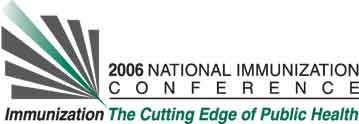Melissa Marx
1,
Angel R. Aponte2, Susan Manning
1, Annie Fine
2, Vikki Papadouka
3, Jennifer Leng
2, Pauline Thomas, and Stephen Friedman
2. (1) Centers for Disease Control, New York, NY, USA, (2) Citywide Immunization Registry, Bureau of Immunization, New York City Department of Health and Mental Hygiene, 2 Lafayette St., 19th Floor, New York, NY, USA, (3) Citywide Immunization Registry, Bureau of Immunization, NYC Department of Health and Mental Hygiene, 2 Lafayette Street, 19th floor - CN21, New York, NY, USA
Learning Objectives for this Presentation:
By the end of the presentation, participants will be able to describe the full range of AEs following smallpox vaccinations given by New York City's Department of Health and Mental Hygiene (NYCDOHMH) during the 2003 vaccination campaign.
Background:
From February 18–May 21, 2003, NYCDOHMH carefully screened and vaccinated healthcare worker and first responder volunteers in accordance with the national smallpox vaccination campaign.
Objectives:
Analyze symptom diary data and provider reports to characterize AEs following smallpox vaccination.
Methods:
Vaccinees were given a 28-day symptom diary. Cardiac symptoms were added to diaries after April 15. Healthcare providers reported AEs by phone. Diary data and provider reports were combined with demographic data.
Results:
Most of the 340 persons vaccinated were female (52%), non-Hispanic White (71%) and had been vaccinated for smallpox previously (92%). Average age was 49 years (Range 24-80). Of 17 provider-reported AEs, five were chest pain without evidence of acute ischemic events; one was exacerbation of pre-existing cardiomyopathy; one was anterior uveitis; one was suspected inadvertent inoculation. Remaining reports were mild and self-limited. Demographic characteristics of 241 (71%) vaccine recipients returning diaries did not differ from those who did not return diaries (p>0.3). Common symptoms were redness at vaccination site (57%), blisters (55%), pus (54%), bumps/pimples (49%), itching at vaccination site (42%), irritation at tape site (32%), and pain/tenderness at vaccination site (21%). Proportion reporting symptoms peaked at 41% two to seven days after vaccination and dropped below 20% on day nine. One of 31 vaccine recipients receiving revised diaries reported chest pain/tightness. This patient was also reported by a provider, and is included in the provider-reported AE summary. Overall 10% reported missing work.
Conclusions:
This population of highly screened and previously vaccinated vaccine recipients had few provider-reported AEs. Diary symptoms were mild, self-limited, and consistent with previous descriptions of local reactions to smallpox vaccine.
See more of Posters
See more of The 40th National Immunization Conference (NIC)

